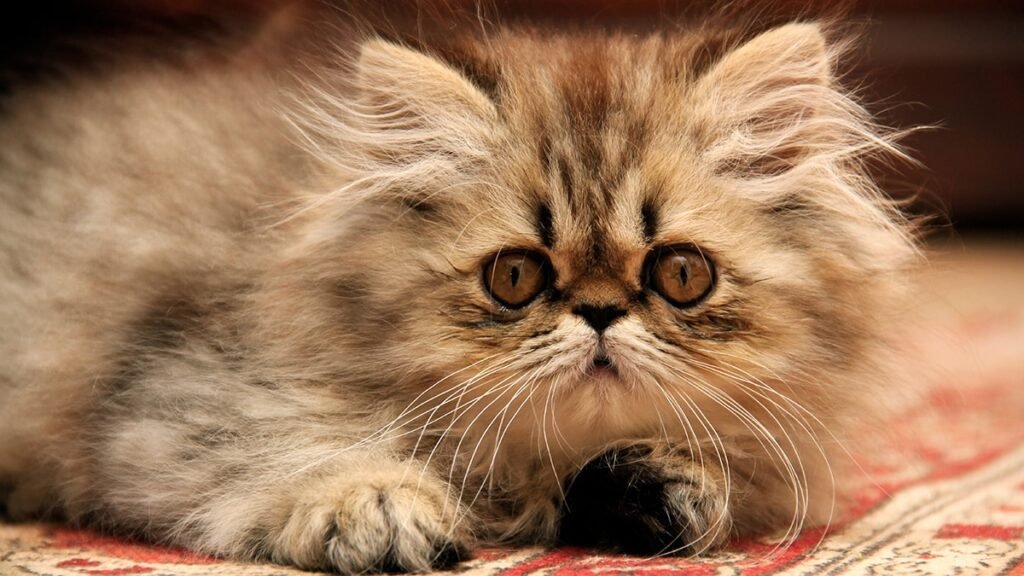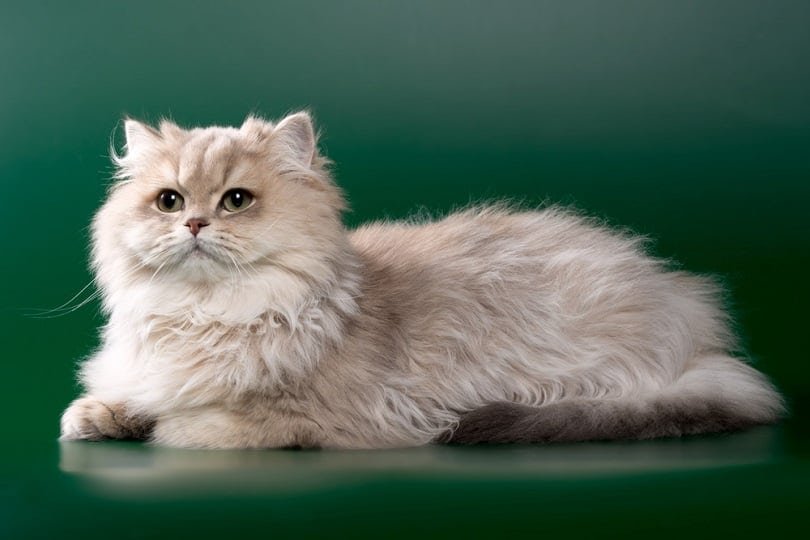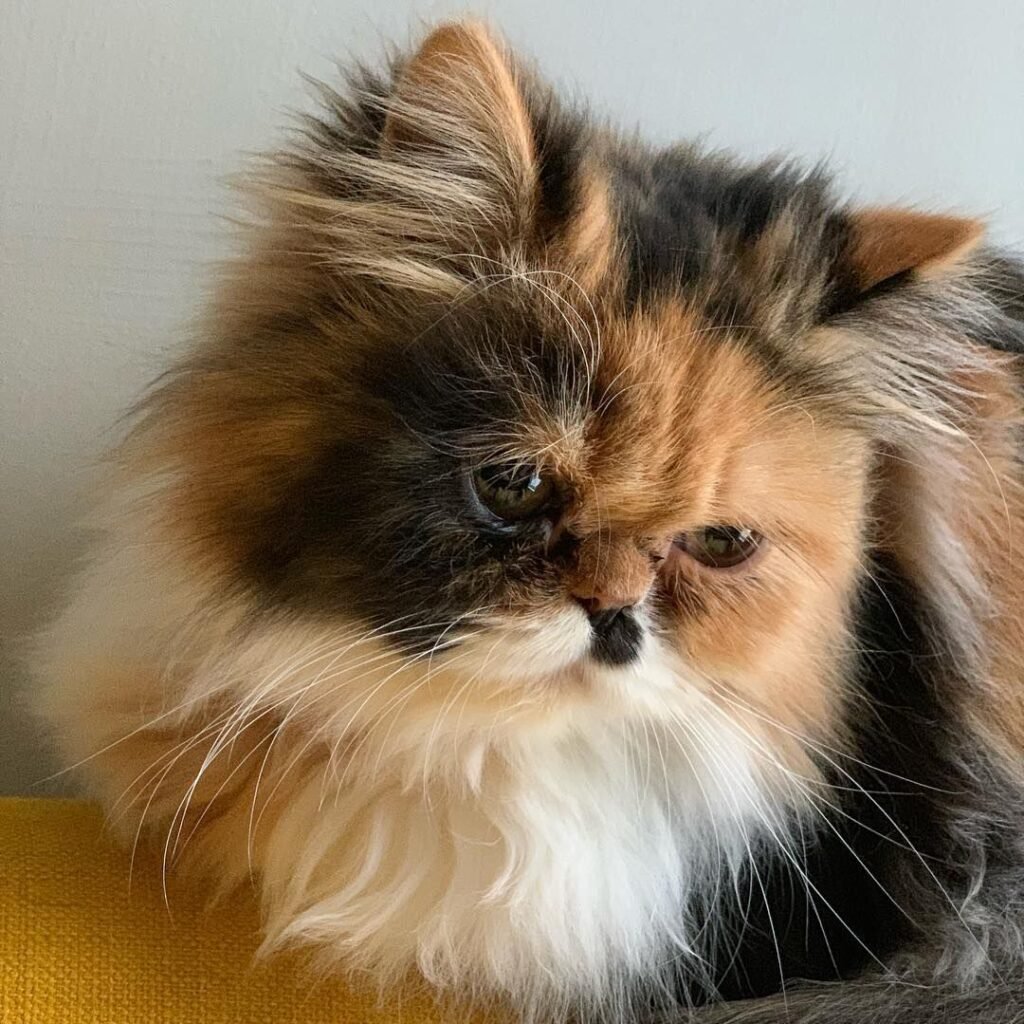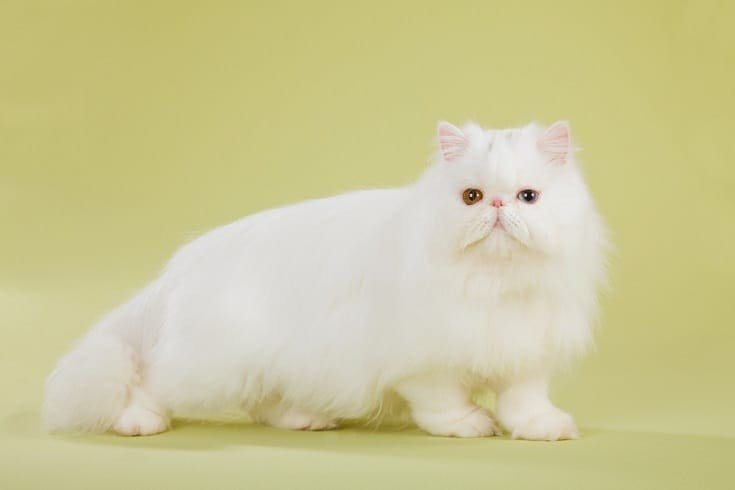Have you ever wondered about the fascinating diversity of color in Persian cats? In the world of feline genetics, the palette of hues possessed by these majestic creatures is beautifully intricate. As you embark on a journey into the realm of Persian cats, you’ll uncover the enchanting process of color selection. Discover the mysterious forces at play behind the vibrant coats that grace these graceful creatures, and gain a deeper appreciation for the marvelous artistry of nature. So, let’s unravel the secrets and explore who truly holds the brush when it comes to painting the colors of Persian cats.
The Role of Genetics
Genetics plays a crucial role in determining the coat color of Persian cats. Every cat inherits its coat color genes from its parents. These genes are responsible for the pigmentation and patterns that give each cat its unique appearance. Understanding the mechanisms of genetic inheritance is essential in comprehending how coat color is passed down in Persian cats.
Genetic Inheritance
Coat color in Persian cats follows the principles of Mendelian inheritance. Genes responsible for coat color are located on the chromosomes, specifically on the DNA molecules within the nucleus of each cell. These genes come in pairs, with one copy inherited from the mother and the other from the father.
The genes responsible for coat color can be dominant or recessive. Dominant genes are expressed and manifest their effect even when paired with a recessive gene. On the other hand, recessive genes are only expressed when an individual has two copies of the recessive allele. This means that if a cat inherits a dominant allele for a particular coat color, it will exhibit that color, while a recessive allele will only produce that color if two recessive alleles are present.
Coat Color Genes in Persian Cats
Persian cats have a wide range of coat colors, including white, black, blue, red, cream, chocolate, and many other variations. These coat colors are determined by specific genes that control the production and distribution of pigment in the hair shafts. The two main pigment types that contribute to coat color are eumelanin and pheomelanin.
Eumelanin is responsible for dark black and brown colors, while pheomelanin produces red and yellow shades. The amounts and distribution of these pigments determine the different coat color variations seen in Persian cats.
The Role of Parents in Determining Coat Color
When breeding Persian cats, the coat color of the parents greatly influences the coat color of the offspring. Each parent contributes one set of genes, and the combination of these genes ultimately determines the coat color possibilities for the kittens. Breeders carefully choose parent cats with desirable coat colors to achieve specific results in their breeding programs.
The coat color of a Persian cat can be controlled to some extent by selectively breeding parents with desired coat color traits. By selectively mating cats with specific coat colors, breeders can increase the likelihood of producing offspring with the desired coat color. However, it is important to note that genetic inheritance is not always predictable, and there can be surprises in the coat color of the kittens.
Environmental Factors
While genetics strongly influence the coat color of Persian cats, environmental factors can also have an impact on color development, particularly during kittens’ growth.
The Effect of Temperature
Temperature during crucial developmental stages can affect the coat color of Persian kittens. Cold temperatures can cause the restriction of blood vessels, leading to decreased pigment production and lighter coat colors. Conversely, warmer temperatures can stimulate increased blood flow, resulting in more pigmentation and darker coat colors. This phenomenon explains why some Persian kittens may temporarily have lighter colors that darken as they mature.
Color Development during Kittens’ Growth
The coat color of Persian kittens is not fully developed at birth. As they grow, the production and distribution of pigments in their hair shafts continue to evolve. It is not uncommon for kittens to have a different coat color compared to their adult counterparts. The full development of the coat color can take up to a year, and breeders and owners should be patient and observe the gradual changes in their kittens’ coat.


Breeding Techniques
Selective breeding is a common practice among Persian cat breeders to produce desirable coat colors. By strategically pairing cats with specific coat color traits, breeders aim to enhance and maintain the desired coat colors in their breeding programs.
Selective Breeding
Selective breeding involves choosing parent cats with the desired coat colors to increase the chances of producing offspring with those preferred colors. Breeders carefully analyze the coat color genes of potential breeding cats to ensure the highest probability of passing down the desired coat color traits to the next generation. This meticulous approach allows breeders to refine and improve coat color over time.
Purposeful Genetic Manipulation
In addition to selective breeding, some breeders may also employ purposeful genetic manipulation techniques to achieve specific coat colors. By introducing genes or altering the expression of certain genes responsible for coat color, breeders can create unique and rare coat color variations in Persian cats. However, it is important to note that such techniques should only be employed responsibly, taking the welfare of the cats into consideration.
Influence of Diet and Nutrition
Diet and nutrition play a significant role in maintaining and enhancing the coat color of Persian cats. Providing a balanced and high-quality diet can help promote vibrant and healthy coat colors.
The Impact of Diet on Coat Color
Proper nutrition is essential for maintaining healthy hair and skin, which directly influences coat color in Persian cats. Nutrients like omega-3 fatty acids, vitamins, and minerals contribute to the quality of the coat, ensuring it remains lustrous and vibrant. Cats should be fed a complete and balanced diet specifically formulated for their nutritional needs to support optimal coat color.
Nutritional Supplements to Enhance Coat Color
In some cases, additional nutritional supplements may be given to Persian cats to enhance their coat color. Supplements containing omega-3 fatty acids, such as fish oil, can help improve coat health and enhance color. However, it is always advisable to consult with a veterinarian before introducing any supplements to a cat’s diet to ensure they are safe and appropriate.


Grooming and Coat Maintenance
Proper grooming and coat maintenance are crucial in showcasing the natural beauty and color of Persian cats. Regular grooming routines and using the right products can help maintain the coat’s health and enhance its color.
The Art of Grooming
Grooming Persian cats involves regular brushing to prevent matting and the accumulation of loose hair. Brushing also helps distribute the natural oils produced by the skin, which promote a glossy and healthy coat. Additionally, regular grooming sessions provide an opportunity for owners to inspect the coat for any abnormalities or changes in color that may indicate underlying health issues.
Choosing the Right Products for Coat Color Enhancement
When selecting grooming products for Persian cats, it is important to choose those specifically formulated for their coat color. Some products are designed to enhance and protect specific coat colors, helping maintain vibrant shades and minimizing color fading. Shampoos, conditioners, and grooming sprays tailored to specific coat colors can effectively preserve the richness and intensity of the coat’s color.
Health Conditions and Coat Color
Certain health conditions can influence the coat color of Persian cats. Genetic disorders and underlying health factors may lead to changes in coat color or variations in the coat patterns.
Genetic Disorders and Associated Coat Color Changes
Genetic disorders can affect the production or distribution of pigments, leading to changes in coat color. For example, in some cases of albinism, the lack of melanin production results in a white coat color. Genetic disorders related to pigmentation can manifest as irregular patches, dilution of color, or complete absence of pigment in certain areas of the coat.
Coat Color Variations due to Health Factors
Aside from genetic disorders, general health conditions can also impact coat color in Persian cats. Conditions like nutritional deficiencies, hormonal imbalances, and skin diseases may cause changes in coat texture or affect the production of pigments. It is important to regularly monitor the cat’s overall health and seek veterinary care if any significant changes in coat color or condition are observed.


The Human Factor
When it comes to choosing the color of Persian cats, both breeders and pet owners play a significant role. Their preferences and choices heavily influence the selection and breeding process.
Breeders’ Preferences and Choices
Breeders carefully select parent cats based on their preferred coat colors and traits. Their preferences for certain coat colors guide the direction of breeding programs, as they aim to consistently produce offspring with those desired coat colors. Breeders dedicate time and effort to ensure their chosen coat colors meet breed standards and customer expectations.
Color Selection by Pet Owners
Pet owners also have a say in the color selection of their Persian cats. Whether adopting from a breeder or a shelter, owners often have preferences for specific coat colors, patterns, or variations. They can choose from a wide range of coat colors available and select a companion that matches their personal preferences and taste.
Historical Significance
The coat colors of Persian cats have evolved over time, influenced by historical events, cultural preferences, and symbolism associated with different colors.
The Evolution of Coat Colors in Persian Cats
Coat colors in Persian cats have seen significant evolution throughout history. Persian cats were originally found in the Middle East, where their coat colors were influenced by natural selection and adaptation to various environments. As Persian cats spread across different regions and bred with local feline populations, new coat color variations emerged. Over time, breeders selectively bred Persian cats to achieve specific coat colors, resulting in the diverse range of colors seen today.
Symbolism and Cultural Influences on Color Preference
In many cultures, specific coat colors are associated with symbolism and cultural beliefs. For example, black cats have often been believed to bring good luck in some cultures, while others associate certain coat colors with mystical or spiritual qualities. These cultural influences have shaped the preferences of both breeders and pet owners in selecting certain coat colors over others.


Understanding Color Genetics
To fully comprehend the role of genetics in determining coat color in Persian cats, it is essential to understand the fundamental principles of color genetics and the involvement of melanin.
The Role of Melanin
Melanin is the pigment responsible for the color of hair, skin, and eyes in both humans and animals. It is produced by specialized cells called melanocytes and comes in two main types: eumelanin and pheomelanin. The balance and distribution of these melanins determine the final coat color of Persian cats.
Importance of Eumelanin and Pheomelanin
Eumelanin contributes to darker coat colors, ranging from black to brown, while pheomelanin produces red and yellow shades. The interaction and expression of these two melanins result in the vast array of coat colors seen in Persian cats. The relative abundance and distribution of eumelanin and pheomelanin determine the specific color variations observed.
Genetic Mutations and Color Changes
Genetic mutations can occur in the genes responsible for producing or distributing melanin, leading to changes in coat color. These mutations can result in new and unique coat color variations not previously observed in Persian cats. Through genetic testing and careful breeding, breeders can identify and propagate these desirable color mutations to create new coat color possibilities.
Genetic Testing
Advancements in DNA testing have revolutionized the field of coat color genetics in Persian cats. These tests allow breeders to predict and control coat color outcomes with greater accuracy.
The Advancements in DNA Testing
DNA testing can provide valuable information about the genetic makeup of Persian cats, including the presence of specific coat color genes and potential color variations. By analyzing the cat’s DNA, breeders can determine the probability of passing down certain coat colors to future generations. This technology aids in strategic breeding choices and helps achieve the desired coat colors more consistently.
Predicting and Controlling Coat Color in Persians
Through genetic testing, breeders can predict and control coat color outcomes in Persian cats more reliably. By understanding the genetic makeup of parent cats and analyzing their coat color genes, breeders can make informed decisions about mating pairs to increase the chances of producing offspring with desired coat colors. This advancement not only benefits breeders in maintaining specific coat color traits but also ensures that pet owners can have a clearer understanding of the potential coat colors of their future companions.
In conclusion, the color of a Persian cat is determined by a combination of genetic factors, environmental influences, grooming practices, health conditions, breeder and owner choices, historical significance, and a deeper understanding of color genetics. The coat color variations seen in Persian cats reflect the rich tapestry of genetics and cultural preferences, making them even more fascinating and beautiful companions. With advancements in genetic testing and responsible breeding techniques, breeders and owners can continue to shape and appreciate the wide range of captivating coat colors that Persian cats exhibit.



